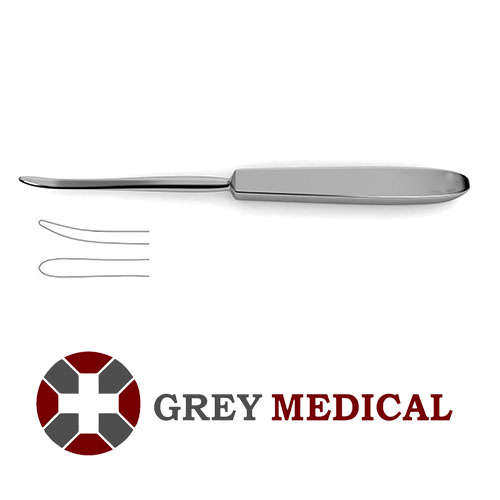In the world of surgery, success is often measured in millimeters. The ability to perform delicate procedures with accuracy and control is paramount, and this relies heavily on the quality and design of the instruments used. Among the vast array of tools available to surgeons, certain instruments stand out for their specific function and timeless design. The Langenbeck elevator is one such tool, a cornerstone instrument in various surgical disciplines, revered for its simplicity and effectiveness.

Understanding the Langenbeck Elevator’s Design
At first glance, the Langenbeck elevator may seem straightforward, but its design is a testament to surgical ingenuity. Typically crafted from high-grade stainless steel, the instrument features a long, slender shaft that culminates in a flattened, slightly curved, or straight blade-like tip. This tip is the working end, designed to be both strong enough to lift tissue and delicate enough to avoid causing unnecessary trauma.
The handle is designed for a secure and comfortable grip, allowing the surgeon to apply precise force and control during a procedure. The overall balance of the instrument is crucial, ensuring it feels like a natural extension of the surgeon’s hand. Companies like GreyMedical®, known for their dedication to innovation and excellence in crafting surgical instruments, place immense emphasis on these ergonomic details. The quality of the material and the precision of the manufacturing process ensure the instrument is durable, can be effectively sterilized, and maintains its integrity through countless procedures.
Key Applications in Surgical Practice
The freer periosteal elevator is a versatile instrument with applications spanning multiple surgical specialties, most notably in orthopedic, plastic, and maxillofacial surgery. Its primary function is to lift and separate the periosteum—the dense membrane that covers the surface of bones—from the underlying bone.
Orthopedic Surgery
In orthopedic procedures, gaining clear access to bone is a critical first step. Whether performing a fracture repair, a joint replacement, or a bone graft, surgeons use the Langenbeck elevator to carefully peel back the periosteum. This action protects the soft tissue and its vital blood supply while exposing the surgical site. The instrument’s thin, yet robust, tip allows it to slide cleanly between the bone and its covering, minimizing damage and promoting better post-operative healing.
Plastic and Reconstructive Surgery
Plastic surgeons also rely heavily on this elevator, particularly in procedures involving bone or cartilage manipulation. During rhinoplasty, for example, it is used to elevate the soft tissues and periosteum from the nasal bone and cartilage framework. This provides the necessary exposure to reshape the nose. Its precise control is essential for achieving the desired aesthetic outcome while preserving the delicate structures of the face.
Dental and Maxillofacial Surgery
In dental and oral surgery, the Langenbeck elevator is indispensable for elevating mucoperiosteal flaps. When a surgeon needs to access the jawbone for a tooth extraction, dental implant placement, or corrective jaw surgery, this tool is used to create a clean separation of the gum tissue from the bone. This meticulous technique ensures the tissue remains healthy and can be sutured back into place securely after the procedure.
The Importance of Quality and Precision
The effectiveness of a surgical procedure is directly linked to the quality of the instruments used. A poorly crafted elevator with a dull or improperly shaped tip can tear tissue, cause unnecessary bleeding, and complicate the surgery. This is why surgeons and healthcare facilities partner with trusted manufacturers. GreyMedical®, a privately owned medical technology company, exemplifies the commitment to excellence required in this field. Their focus on superior craftsmanship ensures that each instrument, including the Langenbeck elevator, performs flawlessly, providing surgeons with the confidence they need to operate at the highest level.
The materials, weight, balance, and edge retention of an instrument like the Langenbeck elevator are not minor details; they are critical factors that influence surgical outcomes. Precision-made instruments contribute to cleaner surgical fields, reduced operative time, and faster patient recovery.
Conclusion: An Enduring Legacy in Surgery
The Langenbeck elevator is more than just a piece of steel; it is a vital tool that embodies the principles of precision, control, and minimal invasiveness. Its simple, effective design has stood the test of time, remaining an essential instrument in the modern operating room. From complex orthopedic repairs to delicate facial reconstructions, its role in elevating tissue and providing clear surgical access is fundamental. As surgical techniques continue to evolve, the demand for high-quality, reliable instruments will only grow, cementing the legacy of foundational tools like the Langenbeck elevator for generations to come.

